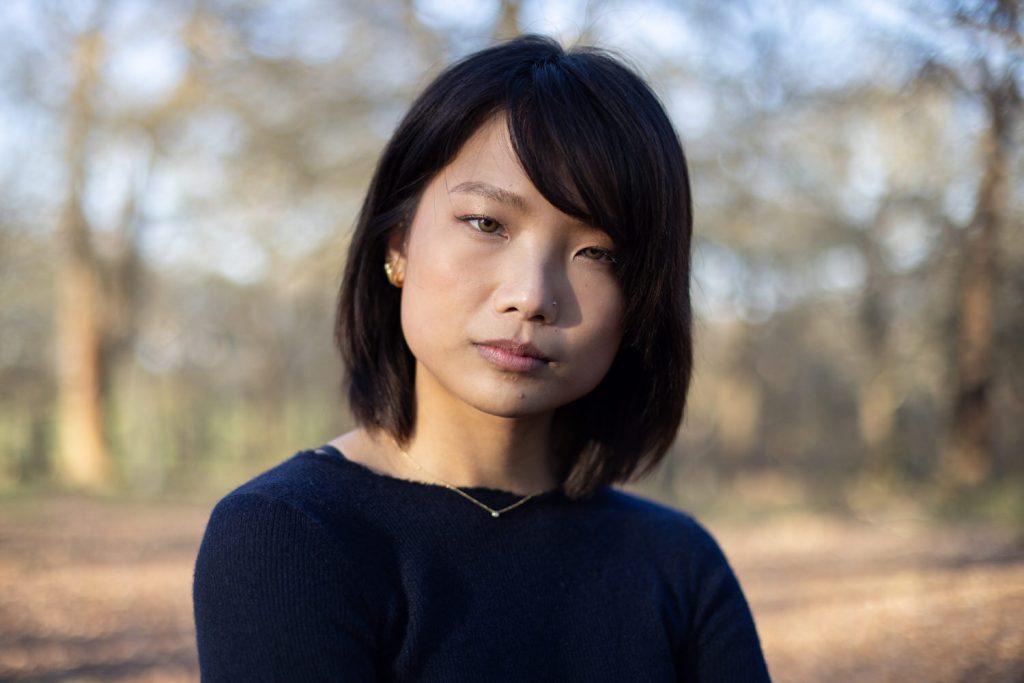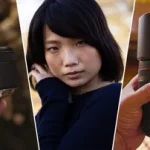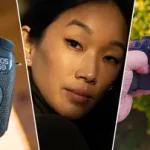Looking to buy a new lens but can’t decide between the Canon EF 50mm f1.4 USM and the Canon RF 15-35mm f2.8 L IS USM? This review will compare these two lenses to help you make an informed decision.

光圈和焦距
Let’s start by examining the apertures and then the focal lengths of both lenses.
The Canon EF 50mm f1.4 lens boasts a wider aperture than the Canon RF 15-35mm f2.8 lens. With a maximum aperture of f1.4, the EF 50mm lens allows for more light to enter the camera, while the RF 15-35mm lens has a maximum aperture of f2.8.
Having a larger aperture gives the 佳能 EF 50mm f1.4 镜头 an advantage over the Canon RF 15-35mm f2.8 lens. It’s worth noting that a smaller f-number signifies a wider aperture, resulting in better light-gathering abilities.
It’s essential to note that while the lens aperture has a physical limit, as with f1.4 and f2.8 in this case, there are also limits to the shutter speed and ISO. The lower the shutter speed, the higher the risk of introducing motion blur into your images.
On the other hand, pushing the ISO too high can result in unsightly noise in your images. Therefore, having a lens that can open wider is preferable as it can naturally allow more light to enter the camera.
Moving on to the focal length, the remaining numbers in the lenses’ names indicate the magnification of the lenses. In this case, the Canon EF 50mm f1.4 lens has a longer focal length than the Canon RF 15-35mm f2.8 lens.

总理
It’s worth mentioning that the Canon EF 50mm lens is a prime lens, which means it has a fixed focal length. On the other hand, the Canon RF 15-35mm 镜头 is a variable lens, which allows its focal length to change depending on how zoomed in or zoomed out you are.
You might wonder why some lenses are prime, while others are variable. The reason is that prime lenses tend to produce sharper images, while variable lenses offer more flexibility. Each type of lens has its advantages and disadvantages, and it ultimately comes down to personal preference and the specific use case.
When it comes to focal length, the better option depends on your needs and preferences, as different focal lengths can produce unique outcomes due to varying distortion levels.
For instance, a longer lens can have a more limited field of view, meaning it captures less in the frame than a photo taken with an 24mm lens from the same spot.
It’s also crucial to remember that different focal lengths can affect the look of the subjects in a photo because of their unique distortion characteristics.
失真
A person’s face may appear slightly distorted when captured with a wider lens, even if the photographer moves back to balance out the extra zoom of a longer lens like 100mm.
In general, 85mm is considered the ideal focal length for portrait photography as it’s believed to create the most attractive representation of the subject’s face. 50mm lenses are often considered a close second due to their proximity to 85mm.
However, this isn’t a hard and fast rule, and it’s crucial to keep in mind that the ideal focal length may vary based on specific circumstances and personal preference.
Later in the review, we will delve into the specific advantages of each lens in more detail, but for now, let’s talk about their portability.
尺寸和结构
The physical dimensions of a lens can significantly affect its portability. The Canon EF 50mm f1.4 lens measures 73.8 x 50.5mm or 2.9 x 2 inches and weighs 290g or 10.23oz. In contrast, the Canon RF 15-35mm f2.8 lens measures 126.8 x 88.5mm or 4.99 x 3.48 inches and weighs 840g or 29.63oz.
As we can see, the EF 50mm f1.4 lens is physically smaller and lighter than the RF 15-35mm lens.
Both the Canon EF 50mm and the Canon RF 15-35mm lenses feature metal mounts, but the EF lens has a relatively plasticky feel. The RF 15-35mm lens is excellently constructed, which is unsurprising given its price.

图像质量
好了,这些镜头能做什么呢?我们先来了解一下它们的最小对焦距离。
最短对焦距离
The minimum focusing distance is the closest distance at which a lens can focus on a subject. For example, when trying to take a close-up picture of a bee, you may notice that the camera won’t be able to focus on the bee as you move closer to it.
In simpler terms, a lens with a shorter minimum focusing distance allows you to get closer to your subject.
Considering these factors is crucial when selecting a lens that meets your requirements. In the case of the Canon EF 50mm lens, its minimum focusing distance is 45cm or 17.72 inches. In contrast, the Canon RF 15-35mm lens requires at least 28cm or 11 inches to focus on a subject.
锐度
Sharpness is another important aspect to consider when selecting a lens. In this case, the Canon RF 15-35mm is sharper than the Canon EF 50mm lens.
Typically, more affordable lenses may not have even sharpness across the frame, with lenses being sharper in the centre than on the edges.
渐晕
对了,渐晕怎么办?
In this case, both the Canon EF 50mm and the Canon RF 15-35mm lenses exhibit some vignetting. However, this isn’t a significant issue as vignetting can be corrected in post-production.
It’s worth noting that some people prefer a certain level of vignetting in their photos, as it can add depth to the images.
色差
Chromatic aberration is another factor to consider when selecting a lens. In this case, the Canon EF 50mm lens exhibits some chromatic aberration, while the Canon RF 15-35mm exhibits a little bit.
Chromatic aberration is more likely to occur in low-light conditions, such as during sunset. It appears as a colour bleed along straight edges in the images. It’s worth noting that while most people won’t notice this issue, it’s essential to be aware that both lenses exhibit it to some extent.
Chromatic aberration can occur in any lens, but more affordable lenses tend to display it more frequently.
图像稳定
Right. What about IS, or image stabilisation? Does either of these lenses have it?
In this case, the Canon RF 15-35mm lens features IS, while the Canon EF 50mm lens does not. This is less than ideal, as IS can optically smooth out videos and reduce motion blur in photos.
I actually use the Canon RF 15-35mm lens to film most of my B-roll. If you’re interested, there is a link below for you to check out.
自动对焦
好吧,那自动对焦呢?
Both lenses’ names include USM, indicating that they are equipped with Canon’s Ultrasonic Motor. While there are multiple types of USM motors, we won’t delve into that level of detail.
Simply put, the USM system is typically found on more expensive lenses, and it provides a smooth and quick autofocus. While it is relatively silent, it’s noisier than the STM focusing system.
Due to the noise issue, lenses that are aimed more at video often use the STM system, while those aimed more at photography use USM.

兼容性
对了,这两个镜头可以安装在什么相机上?
The Canon EF 50mm and the Canon RF 15-35mm lens are compatible with two different types of cameras, as indicated by their names.
The 50mm lens is an EF lens, and it can be used with Canon camera bodies that have an EF or EF/EF-S mount, such as most of their DSLRs, especially the more affordable ones like the Canon 77D, 250D, 600D, the Rebel series, and so on.
Adapter
Although it’s possible to mount this lens on an RF body, an adapter is necessary. If you’re interested, an affiliate link for the adapter is provided below.
You can achieve stable footage if you mount the EF 50mm lens on a 佳能 R5 camera, which has in-body image stabilisation (IBIS).
The 15-35mm lens is an RF lens, as indicated by its name, and it is compatible with Canon’s new mirrorless range, such as the R, R5, and other models. By the way, I’ve actually reviewed quite a few mirrorless Canon cameras.
视频博客
Ok, what about vlogging? Can either of these two lenses be used for that?
The Canon RF 15-35mm lens is more suitable for handheld vlogging when compared to the EF 50mm lens because of its wider focal length. The EF 50mm lens has a focal length of 50mm, which can result in being too zoomed in during handheld vlogging.
另一方面 Canon RF 15-35mm f2.8 lens is wider and allows for more to be captured in the frame, making it an excellent choice for handheld vlogging.
The IS feature of the RF 15-35mm lens is also a great advantage, as it provides much more stable footage.

优酷用户
What if you don’t care about vlogging, but just want to make videos with your camera on a tripod?
In this specific scenario, both lenses are suitable, but the EF 50mm lens is a better option due to its wider aperture.
随着 佳能 EF 50mm f1.4 镜头, you can film in low-light environments and get more Bokeh, compared to the RF 15-35mm f2.8 lens.
When filming on a tripod, the presence or absence of IS is not significant since the footage will be stable.
应用
那么,这些镜头是为什么设计的呢?
肖像画
What if you want to do portraits? Both the Canon EF 50mm f1.4 lens and the Canon RF 15-35mm f2.8 are capable of portrait photography. However, the 50mm lens has an advantage in this field due to its wider aperture.
A wider aperture can capture more light, making it suitable for a wider range of environments. Furthermore, it produces more Bokeh, compared to the RF 15-35mm f2.8 lens.
街头摄影
What if I want to do street photography? Both the EF 50mm lens and the RF 15-35mm lens can be utilized for this purpose, but it’s crucial to be cautious, particularly if you have an expensive camera setup.
In this scenario, the RF 15-35mm f2.8 lens is a better option due to its wider focal length of 15-35mm, which can help capture the atmosphere of a place. Additionally, with its f2.8, it can work in low light conditions.
产品摄影
What if I want to take photos of products? When it comes to to that, the Canon EF 50mm lens is a better choice than the RF 15-35mm f2.8 lens due to its focal length of 50mm, which offers more zoom compared to 15-35mm.
With the Canon EF 50mm f1.4 lens, you can easily capture both close-up shots and regular product photos. However, it’s not a strict rule, as I personally use the Canon RF 15-35mm for my B-roll, as it suits my style.
风景摄影
For landscape photography, wider lenses are generally more popular as they allow for capturing more of the scenery. In this case, the RF 15-35mm lens would be a better choice, as it has a wider focal length range of 15-35mm compared to the EF 50mm f1.4 lens, which has a focal length of 50mm.
However, it’s important to note that there are no hard and fast rules when it comes to landscape photography, and photographers can achieve stunning results with various focal lengths. Ultimately, it comes down to the photographer’s preference and the desired outcome.
时尚摄影
How about fashion photography? In addition to its wider aperture, the EF 50mm f1.4 lens also produces a more flattering Bokeh, which can help to elevate the overall look and feel of fashion photography.
However, the RF 15-35mm f2.8 lens can also be used effectively for fashion photography, particularly in situations where a wider focal length is desired to capture more of the environment or context surrounding the subject.
纪录片
What about documentary-style shooting? A variable lens is usually preferred over a prime lens for documentary work. In this regard, the Canon RF 15-35mm lens is better than the Canon EF 50mm lens, as it offers the flexibility to zoom in and out on the fly, providing more versatility in different shooting situations.
Sports & Wildlife
What if I want to capture sports or wildlife? For sports and wildlife photography, you’ll typically want a telephoto lens with a long focal length that lets you get close-up shots from a distance.
The EF 50mm and the RF 15-35mm lenses are not only not telephoto lenses, but they have relatively short focal lengths, which make them less suitable for these types of photography.
Weddings or Events
What about weddings or events? When photographing weddings or events, the primary focus is usually people, isn’t it? If you are limited to using just one, the ideal lens would be versatile and suitable for capturing portraits. The RF 15-35mm lens is the clear winner.
Although it may not be my top choice for portrait photography, it is a highly adaptable lens, and if you can only select one, this would be the one to go for.
普通摄影
Ok, so which lens is best in general? Selecting a good all-around lens can be challenging, but the RF 15-35mm lens stands out in this category.
When looking for a general lens, you would want a lens that is versatile enough to be suitable for most situations, and the RF 15-35mm lens, fits the bill in most cases.
控制
Right, so how easy are these lenses to use?
To begin with, both lenses have manual focus rings that enable you to manually adjust the focus if desired.
Furthermore, the RF 15-35mm f2.8 lens features a zoom ring, which, when rotated, permits you to adjust the lens’s zoom, expanding or narrowing the field of view.
Custom Ring
In addition, the 佳能 RF 15-35mm 镜头 includes a custom control ring that can be configured within the camera. By rotating this ring, you can modify settings like ISO, for example.
While some photographers appreciate this feature, I prefer to disable it during a shoot to avoid accidentally altering critical settings.

长寿
Ok, so how long can I expect these lenses to last?
An essential factor to consider when evaluating the longevity of a lens is the type of mount it has. In this instance, both lenses come equipped with a metal mount, which indicates their durability.
Another crucial consideration is whether the lenses have weather sealing and, if so, what kind. The RF 15-35mm lens is shielded from dust and water splashes, whereas the EF 50mm f/1.4 lens lacks weather sealing altogether.
UV Filter
Numerous photographers, myself included, prefer to employ a UV filter as an additional safeguard for the lens element. I use 希格玛陶瓷紫外线滤光片, which I apply to my lenses immediately and leave on all the time.
Although these filters can be costly, they provide protection for more expensive lenses, making them a worthwhile investment. In addition, having a filter attached to the lens negates the necessity for lens caps, although they can still be used if desired.
When purchasing filters for these lenses, it is critical to consider their filter size, which is distinct from their focal length.
The EF 50mm f1.4 lens has a filter size of 58mm, while the RF 15-35mm f2.8 lens has a filter size of 82mm. It is crucial to remember this distinction since many individuals initially believe that filter size corresponds to focal length.
建议
希望这篇文章对您有所帮助。欢迎您阅读我的其他文章。我们有适合每个人的文章,无论您对以下方面感兴趣 音频或 相机和镜头.另外,如果您喜欢视频评论,请随时查看我的 YouTube 频道.
最后,您可以在下面找到我在本文中提到的所有项目。



